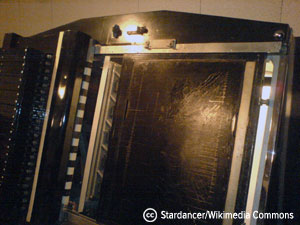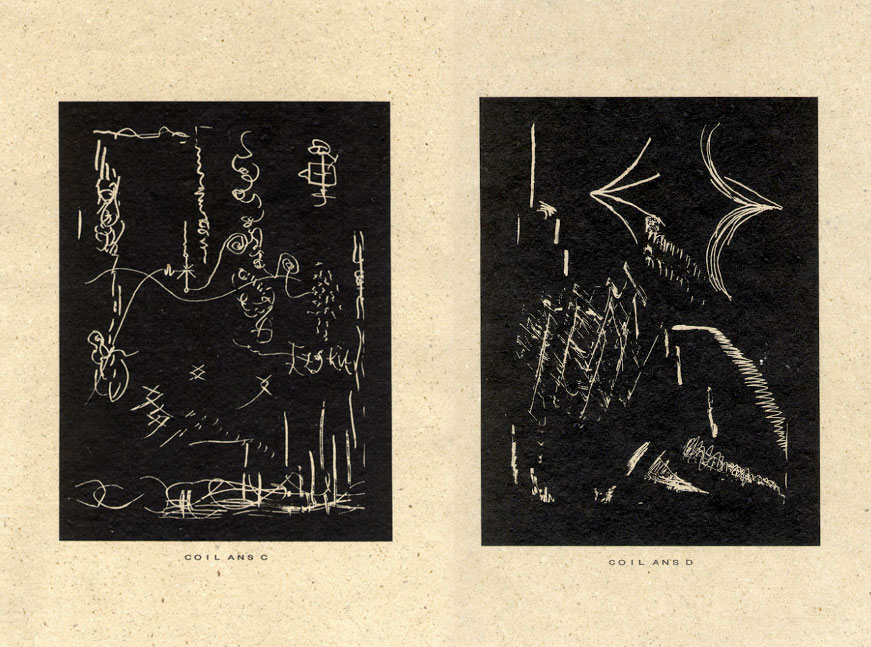Gemeinhin gilt Iannis Xenakis‘ UPIC-System (Kulturtechno früher) als Pionier der grafischen Computerkomposition, aber viel früher schon wurde die Idee in der Sowjetunion geboren (1938) und umgesetzt (1958). Mit dem ANS-Synthesizer wurde der Soundtrack zu Tarkovskys „Solaris“ komponiert.
You don’t play the ANS synthesizer with a keyboard. Instead you etch images onto glass sheets covered in black putty and feed them into a machine that shines light through the etchings, trigging a wide range of tones. Etchings made low on the sheets make low tones. High etchings make high tones. The sound is generated in real-time and the tempo depends on how fast you insert the sheets.
This isn’t a new Dorkbot or Maker Faire oddity. It’s a nearly forgotten Russian synthesizer designed by Evgeny Murzin in 1938. The synth was named after and dedicated to the Russian experimental composer and occultist Alexander Nikolayevich Scriabin (1872–1915).
(via BoingBoing)


